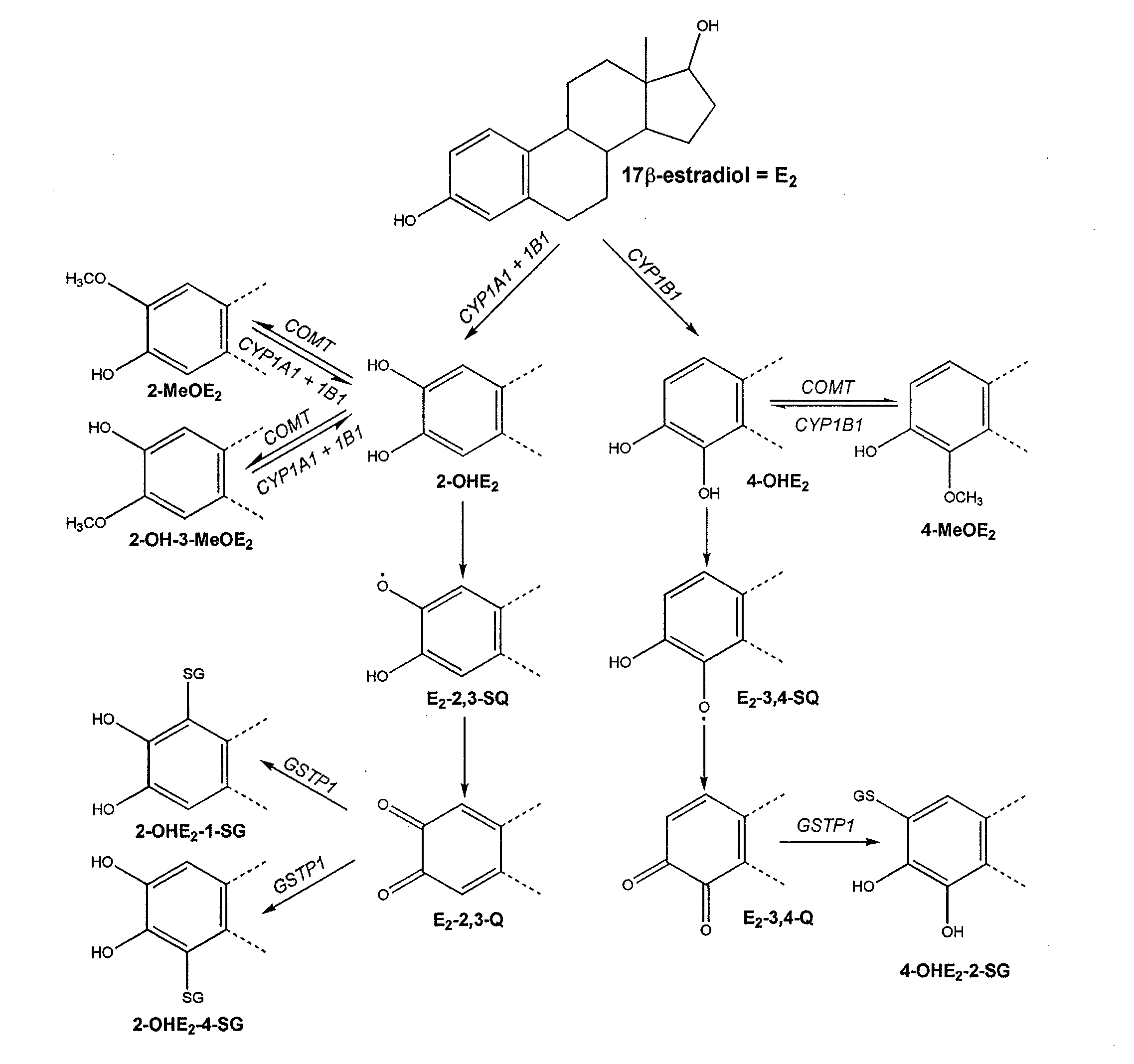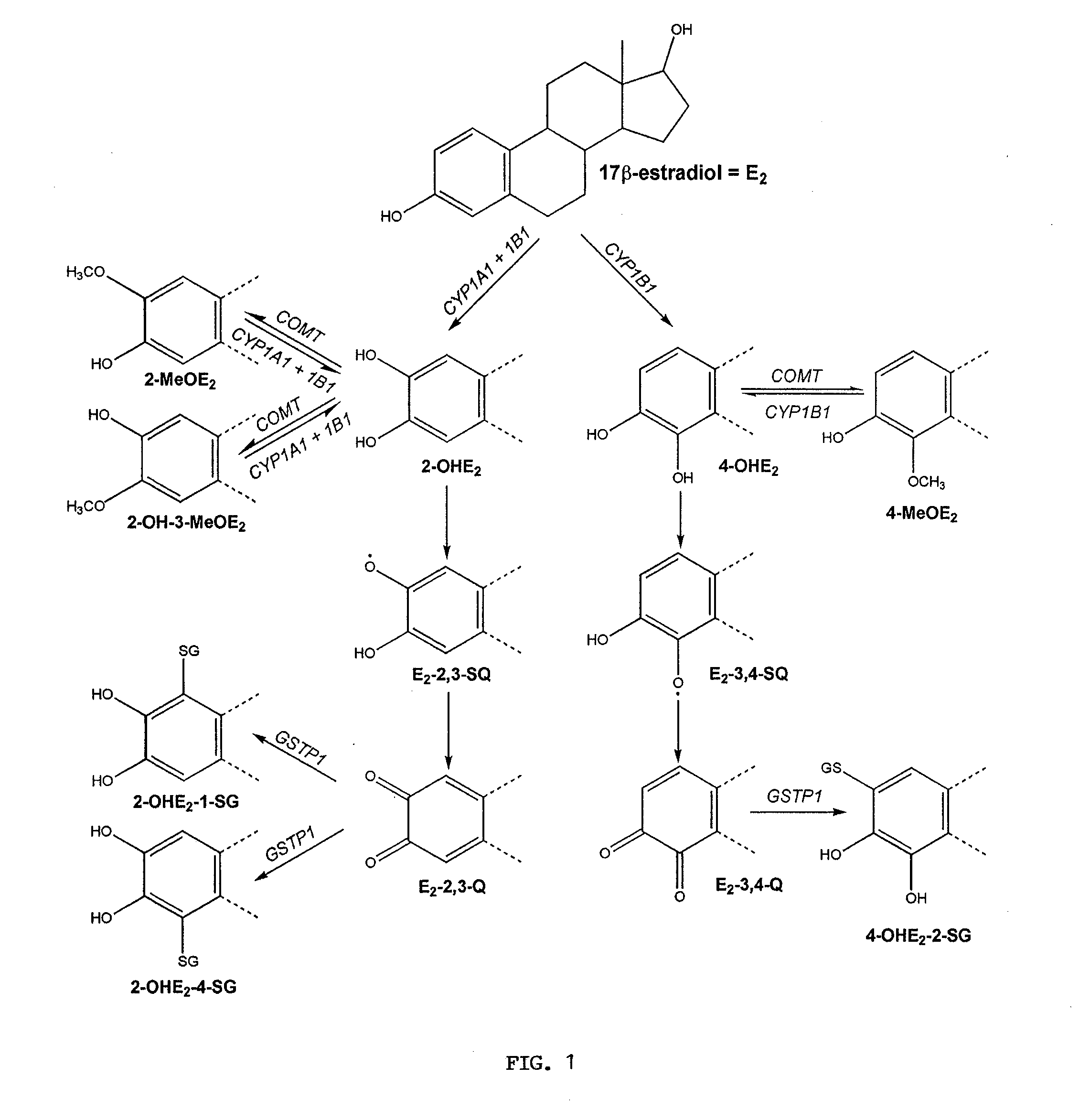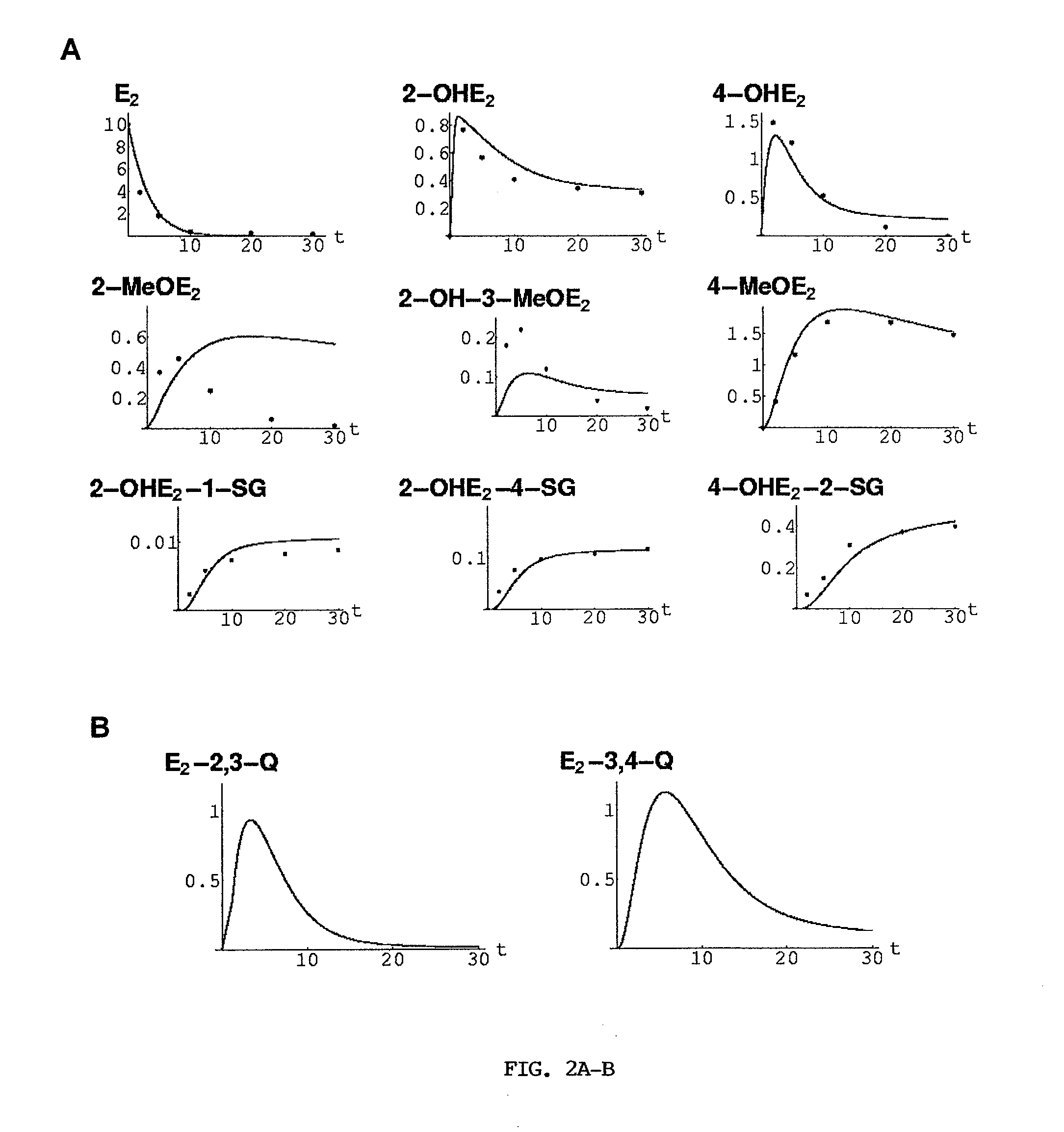Biochemical and genetic analysis for prediction of breast cancer risk
a genetic analysis and biochemical technology, applied in the field of genetics and oncology, can solve the problems of uncertainty in the quantitative interaction of enzymes and the precise mechanism of dna damage, and achieve the effects of reducing increasing the risk of breast cancer, and increasing the production of 4-ohe2
- Summary
- Abstract
- Description
- Claims
- Application Information
AI Technical Summary
Benefits of technology
Problems solved by technology
Method used
Image
Examples
example 1
Methods
[0155]Mathematical Model. The inventor developed a mathematical model for the estrogen metabolism pathway shown in FIG. 1. He assume that each reaction in the pathway (A→B, a generic step in the pathway) is an enzyme-catalyzed reaction of the form:
A+Ek1k2Ck3B+E,
where E denotes the enzyme, C is the enzyme-substrate complex, and ki, i=1,2,3, are the rate constants of the reaction. For these types of reaction, the inventor approximated the kinetics using the quasi-steady state assumption:
C=E*AKm+A,Km=k2+k3k1,
where E* is the initial enzyme concentration. With this assumption, one has:
Bt≈kcatE*AKm+A
where kcat is a constant. This approach leads to a system of nonlinear, ordinary differential equations for the concentrations of the compounds in the pathway. In each equation, kcatj and Kmj are constants and Eenzyme are the enzyme levels in the respective reactions.
(E2)t=-kcat1ECYP1B1E2Km1+E2-kcat2ECYP1A1E2Km2+E2-kcat3ECYP1B1E2Km3+E2(1)(OHE22)t=kcat2ECYP1A1E2Km2+E2+kcat3ECYP1B1E2Km3+E...
example 2
Results
[0162]Validation of in silico Model against Experimental Data. In a previous study, the inventor determined the metabolism of E2, 2-OHE2, 4-OHE2, 2-MeOE2, 2-OH-3-MeOE2, 4-MeOE2, 2-OHE2-1-SG, 2-OHE2-4-SG, and 4-OHE2-2-SG as a function of time in the presence of CYP1A1 (85 pmol), CYP1B1 (165 pmol), COMT (125 pmol), and GSTP1 (500 pmol). Each experimental reaction contained 10 μM E2, 100 μM S-adenosyl methionine, 100 μM glutathione, and proceeded for 0, 2, 5, 10, 20, and 30 min at 37° C., followed by GC / MS and LC / MS analysis (Dawling et al., 2004). FIG. 2A shows superimposed the experimental data (dots) and the model simulations (curves) for all nine analytes over the 30 min reaction time. In the simulations it was assumed that initially all analyte concentrations are zero, except E2(0)=E2*. Enzyme concentrations used in the simulations are consistent with those used in the preceding experimental studies (Hanna et al., 2000; Dawling et al., 2001; Hachey et al., 2003; Dawling et ...
example 3
Discussion
[0167]The complexity of mammary estrogen metabolism was recognized several years ago and outlined in a qualitative model (Newbold and Liehr, 2000; Yager and Liehr, 1996). While this model defined the role of specific components, e.g., the oxidizing phase I and conjugating phase II enzymes, the quantitative impact of these enzymes in the overall pathway could not be assessed. The experimental analysis of single enzymes with simple substrate-product kinetics offered an incomplete picture of the pathway limited to the enzyme examined. Here, the inventor presents a new approach that incorporates experimental data previously obtained with individual enzymes into a mathematical model of the estrogen metabolism pathway. Instead of simply performing a parametric fitting exercise, actual experimental rate constants were used to develop the model, which consists of eleven differential equations that permit us to simulate the kinetics of E2 and eight metabolites in the multi-enzyme p...
PUM
| Property | Measurement | Unit |
|---|---|---|
| weight | aaaaa | aaaaa |
| birth weight | aaaaa | aaaaa |
| birth weight | aaaaa | aaaaa |
Abstract
Description
Claims
Application Information
 Login to View More
Login to View More - R&D
- Intellectual Property
- Life Sciences
- Materials
- Tech Scout
- Unparalleled Data Quality
- Higher Quality Content
- 60% Fewer Hallucinations
Browse by: Latest US Patents, China's latest patents, Technical Efficacy Thesaurus, Application Domain, Technology Topic, Popular Technical Reports.
© 2025 PatSnap. All rights reserved.Legal|Privacy policy|Modern Slavery Act Transparency Statement|Sitemap|About US| Contact US: help@patsnap.com



